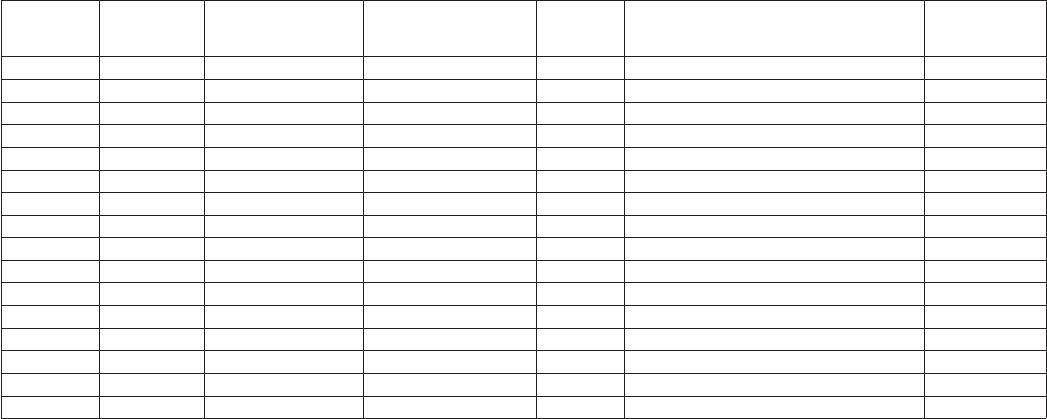
31
5.3 - Evaporator water pump control
The unit can control one or two evaporator water pumps. The
evaporator water pump is turned on when this option is
configured (see User configuration) and when the unit is in one
of the on modes described above or in delay mode. Since the
minimum value for the delay at start-up is 1 minute
(configurable between 1 and 15 minutes), the pump will run
for at least one minute before the first compressor starts. The
pump is kept running for 20 seconds after the unit goes to stop
mode. The pump keeps working when the unit switches from
heating to cooling mode or vice-versa. It is turned off if the
unit is shut down due to an alarm unless the fault is a frost
protection error. The pump can be started in particular
operating conditions when the evaporator heater is active (see
section 5.5). See section 5.14 for the particular evaporator
pump control for the follower unit (master/slave assembly).
If two pumps are controlled and the reversing function has
been selected (see User 1 configuration), the control tries to
limit the pump run time delta to the configured pump change-
over delay. If this delay has elapsed, the pump reversing
function is activated, when the unit is running. During the
reversing function both pumps run together for two seconds.
If a pump has failed and a secondary pump is available, the
unit is stopped and started again with this pump.
The control provides a means to automatically start the pump
each day at 14.00 hours for 2 seconds when the unit is off. If
the unit is fitted with two pumps, the first pump is started on
odd days and the second pump is started on even days. Starting
the pump periodically for few seconds increases the life-time
of the pump bearings and the tightness of the pump seal.
ON/OFF
STATUS
Off
On
On
On
On
On
On
On
On
On
On
On
On
On
On
On
CONTROL
TYPE
-
Local
Local
Local
Local
Local
Remote
Remote
Remote
Remote
Remote
CCN
CCN
CCN
CCN
CCN
HEATING/COOLING
SELECTION IN
LOCAL MODE
-
Cooling
Heating
Auto
Auto
Auto
-
-
-
-
-
-
-
-
-
-
REMOTE HEATING/
COOLING CONTACTS
-
-
-
-
-
-
Cooling mode
Heating mode
Auto mode
Auto mode
Auto mode
-
-
-
-
-
HC_SEL
-
-
-
-
-
-
-
-
-
-
-
Cooling
Heating
Auto
Auto
Auto
OUTDOOR TEMPERATURE
-
-
-
> Cooling threshold
< Heating threshold
Between cooling and heating thresholds
-
-
> Cooling threshold
< Heating threshold
Between cooling and heating thresholds
-
-
> Cooling threshold
< Heating threshold
Between cooling and heating thresholds
OPERATING
MODE
Cooling
Cooling
Heating
Cooling
Heating*
Standby
Cooling
Heating
Cooling
Heating*
Standby
Cooling
Heating
Cooling
Heating*
Standby
PARAMETER STATUS
5.4 - Control interlock contact
This contact checks the status of a loop (water flow switch and
customer safety loop, see section 3.6). It prevents the unit from
starting if it is open when the delay at start-up has expired. This
open contact leads to an alarm shut-down, if the unit is
running.
5.5 - Evaporator antifreeze protection
The heater for the evaporator and water pump cycling (for units
with a pump) can be energised to protect the evaporator, if it
can be damaged by freezing, when the unit is shut down for a
long time at low outdoor temperature.
NOTE: Evaporator heater control parameters can be
modified, using the Service configuration.
5.6 - Control point
The control point represents the water temperature that the unit
must produce. The inlet water is controlled by default, but the
outlet water can also be controlled (requires a Service
configuration modification).
Control point = active setpoint + reset
5.6.1 - Active setpoint
Two setpoints can be selected as active in cooling mode and
three in heating mode. Usually, the second cooling setpoint is
used for unoccupied periods or for ice storage (brine unit). The
second setpoint in heating mode is used for unoccupied
periods, and the third heating setpoint is used for holiday
periods or public holidays. Depending on the current opera-
tions, the active setpoint can be selected by choosing the item
in the Information menu, with the user’s volt-free contacts,
with network commands or with the setpoint timer program
(schedule 2).
* Does not apply to cooling only units that do not control a boiler.


















